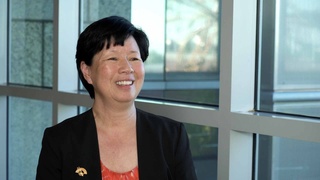Entrevistas
Escape from Hiroshima
Now, I always tell people that I think I had three traumatic event[s] in my life. Certainly, this was one of them, the first one. When we got to the road, there were, I don’t know, 50, 100, lots of people, many people severely injured with injuries that you could not believe, broken limbs. Okay there were people with such terrible burn[s] that their skin would be dripping from their body. Some people, or at least one person I saw had guts hanging out from their tummy, holding on. Some of them had already fallen on the ground begging for water. They say that usually just before you die you get extremely thirsty. So people said, “Don’t give them water because they will die,” but they would have died anyway. By that time, the streets were already linedwith corpses.
So we went through the sea of carnage and finally, I don't know how long it took, it may have been 30 minutes, it may have been an hour, it might have been hours. But I don't know how long it took, but we finally got away from the city that was burning, and away from many of the people with severe injuries, and we got to a train station that was functional. I remember riding on the train and going to a relative who lived in the area called Kabe—they're distant relatives there. We stayed there until the end of the war.
Fecha: September 3, 2019
Zona: California, US
Entrevista: Masako Miki
País: Watase Media Arts Center, Japanese American National Museum







